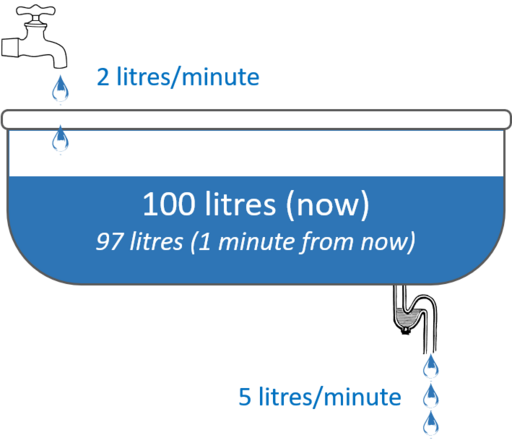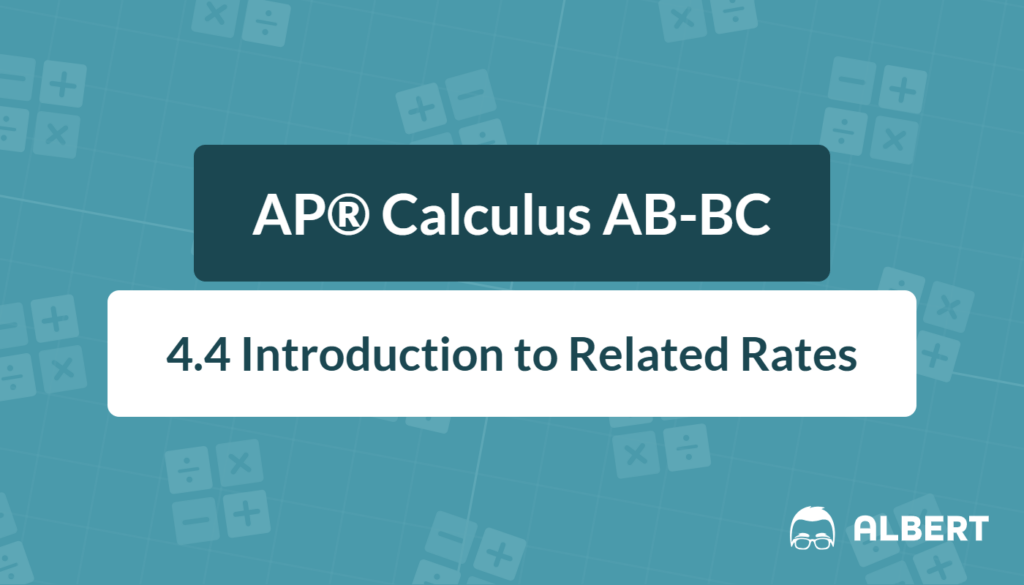Related rates calculus focuses on how different quantities change with respect to a common variable, often time. This concept appears in 4.4 introduction to related rates and serves as one of the most practical applications of derivatives. When one quantity changes, it can influence another connected quantity. Therefore, learning to link these relationships is essential in understanding more advanced calculus topics.
Below is a guide to understanding related rates, including the chain rule, product rule, and quotient rule. The discussion features simple examples and step-by-step solutions to reveal how each method applies in real-life scenarios.
What We Review
Introduction to Related Rates
“Related rates calculus” is all about studying how two or more variables depend on and affect each other as a function of time or another independent variable. In 4.4 introduction to related rates, this concept is a crucial part of applications of derivatives because it highlights how small changes in one factor can drive changes in another factor.
For instance, consider the radius of a balloon that is inflating. The radius grows with time, and the volume changes at a rate connected to that same time variable. Understanding this link helps solve real-world problems where multiple variables evolve at once.
Understanding Related Rates
What Are Related Rates?
Related rates describe equations in which multiple quantities depend on an independent variable and thus change together. When one aspect grows or shrinks, another will shift because of their shared dependency on time or another variable.
For example, if r is the radius of a circle and A is its area, both might be changing as seconds pass. Therefore, \frac{dr}{dt} and \frac{dA}{dt} are called related rates.
Where Do We Use Related Rates?
These problems appear in many applications of derivatives. Engineers use them to model fluid pressure changes, while architects might apply them when calculating building expansions due to temperature changes. Whenever multiple quantities depend on the same independent variable, the concept of related rates provides a powerful way to link them. Below is an image that represents a scenario in which a tub is being filled and drained at different rates. This is a classic set-up for a related rates problem.

The Role of the Chain Rule
Chain Rule Recap
The chain rule is the foundation of related rates calculus. It states that if y is a function of u, and u is itself a function of x, then:
\frac{dy}{dx} = \frac{dy}{du} \cdot \frac{du}{dx}In many related rates problems, x represents time, and y and u are other variables that change with respect to that time.
Linking Variables Over Time
Instead of writing separate rates for each variable, the chain rule connects them. For example, when A depends on r, and r depends on t, then:
\frac{dA}{dt} = \frac{dA}{dr} \cdot \frac{dr}{dt}This relationship allows easy computation of how A changes once \frac{dr}{dt} is known.
Additional Differentiation Tools
Product Rule
Sometimes, related rates problems involve the product of two changing variables. In that case, the product rule is essential. Recall:
\frac{d}{dx} \bigl(f \cdot g\bigr) = f \cdot \frac{dg}{dx} + g \cdot \frac{df}{dx}This formula often helps when a quantity is formed by multiplying two or more independent quantities, each changing over time.
Quotient Rule
There are also situations where a quantity is formed by the ratio of two variables. The quotient rule states:
\frac{d}{dx} \left(\frac{f}{g}\right) = \frac{g \cdot \frac{df}{dx} - f \cdot \frac{dg}{dx}}{g^2}For example, a concentration measure where mass changes over volume might require the quotient rule if both mass and volume vary.
Combining Rules
In more complex problems, multiple differentiation rules may be needed. It is important to identify all the changing quantities before deciding how to combine the chain rule, product rule, and quotient rule.
General Steps to Solve a Related Rates Problem
- Identify the known rates (for instance, \frac{dr}{dt} or \frac{dv}{dt}).
- Express the relationship between variables, usually as a geometric formula or another relevant equation.
- Differentiate the equation with respect to time (or the independent variable), using the chain, product, or quotient rule where needed.
- Substitute known rates and values into the differentiated formula.
- Solve for the unknown rate and then interpret the result in words.
Example 1: A Changing Shape
Consider a circle with radius r. Suppose the radius increases at a constant rate of 2 \text{ cm/s}. How fast is the area A changing when the radius is 10 \text{ cm}?
Step-by-Step Solution:
- Relationship between variables: The area of a circle is given byA = \pi r^2
- Differentiate with respect to time t: \frac{dA}{dt} = \frac{d}{dt}(\pi r^2) = \pi \cdot 2r \cdot \frac{dr}{dt} (Here, the chain rule applies: \frac{d}{dt}r^2 = 2r \frac{dr}{dt}.)
- Substitute known rate and radius into the formula: \frac{dr}{dt} = 2 \text{ cm/s} and r = 10 \text{ cm}. Therefore,\frac{dA}{dt} = \pi \cdot 2 \cdot 10 \cdot 2 = 40\pi \text{ cm}^2/\text{s}
- Interpretation: The area is increasing at 40\pi \text{ cm}^2/\text{s} when the radius is 10 \text{ cm}.
Example 2: A Combined Rate Scenario
Suppose a rectangular box has length l(t) and width w(t). Both are changing with time, and the area A(t) is given by A = l \cdot w. If l is increasing at 3 \text{ cm/s} and w is increasing at 2 \text{ cm/s}, find \frac{dA}{dt} at the instant l = 12 \text{ cm} and w = 8 \text{ cm}.
Step-by-Step Solution:
- Express the relationships: A = l \cdot w
- Differentiate: Using the product rule,\frac{dA}{dt} = l \cdot \frac{dw}{dt} + w \cdot \frac{dl}{dt}
- Substitute known values: \frac{dl}{dt} = 3 \text{ cm/s}, \frac{dw}{dt} = 2 \text{ cm/s}, l = 12 \text{ cm}, and w = 8 \text{ cm}. Then,\frac{dA}{dt} = 12 \cdot 2 + 8 \cdot 3 = 24 + 24 = 48 \text{ cm}^2/\text{s}
- Conclusion: The area of the rectangle increases at 48 \text{ cm}^2/\text{s} at that specific moment.
Quick Reference Chart
| Term / Concept | Definition / Notes |
| Related Rates | The study of how related quantities change with respect to time |
| Chain Rule | A method to differentiate composite functions |
| Product Rule | A formula to differentiate products of functions |
| Quotient Rule | A formula to differentiate quotients of functions |
Conclusion
In summary, related rates calculus is a key part of 4.4 introduction to related rates within AP® Calculus AB-BC. These problems are central to many applications of derivatives, such as geometry and physics. By carefully applying the chain rule, product rule, and quotient rule, it becomes easier to find how one variable’s rate of change affects another. Therefore, consistent practice will boost confidence in handling more advanced problems, from everyday engineering tasks to intricate real-world scenarios.
Sharpen Your Skills for AP® Calculus AB-BC
Are you preparing for the AP® Calculus exam? We’ve got you covered! Try our review articles designed to help you confidently tackle real-world math problems. You’ll find everything you need to succeed, from quick tips to detailed strategies. Start exploring now!
Need help preparing for your AP® Calculus AB-BC exam?
Albert has hundreds of AP® Calculus AB-BC practice questions, free responses, and an AP® Calculus AB-BC practice test to try out.








